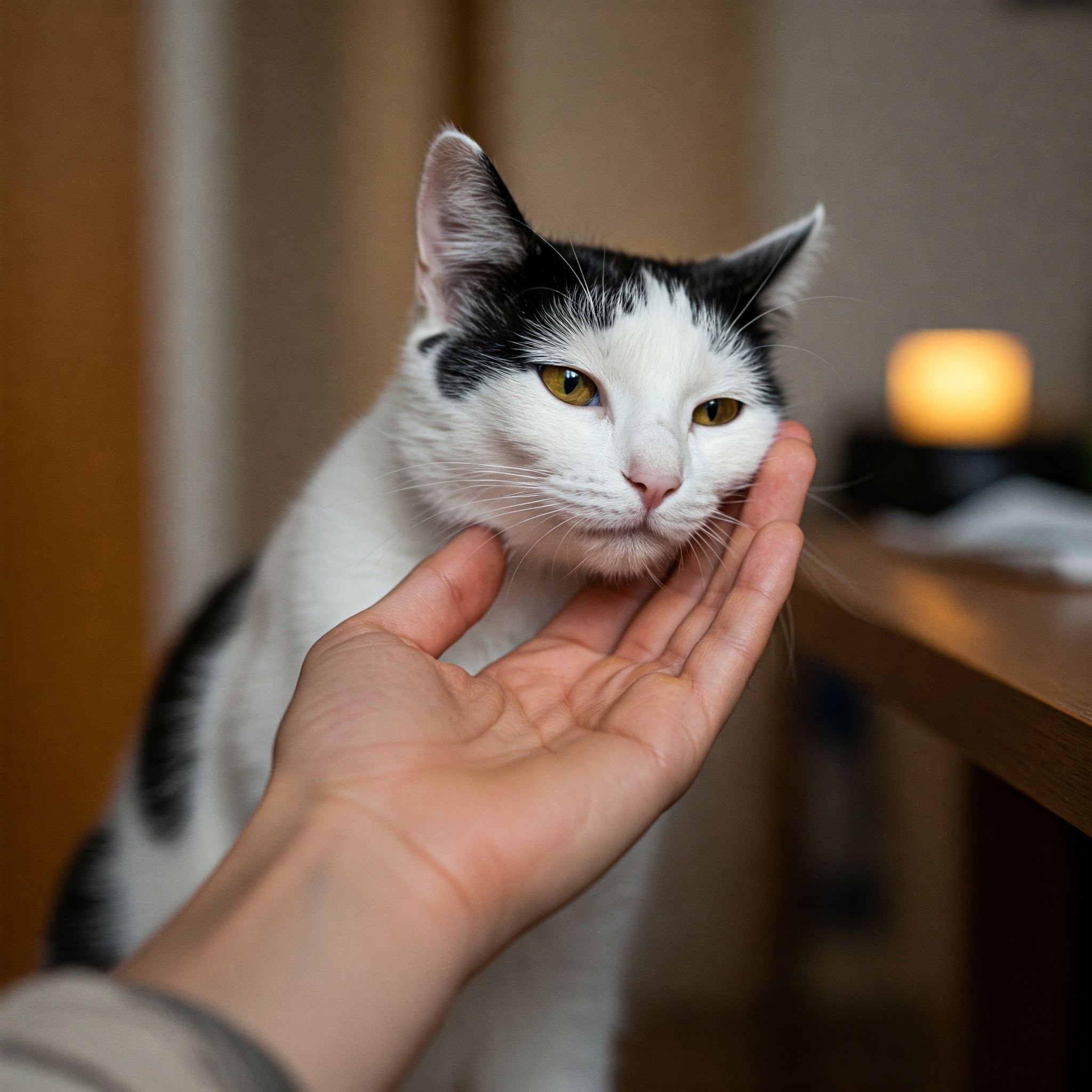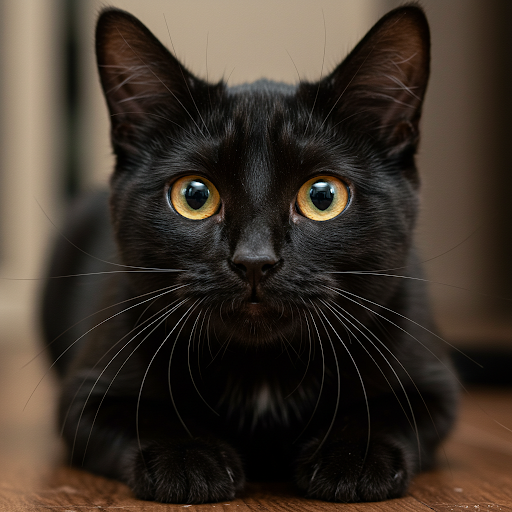Here’s a reveal you might not have seen coming: your rescue cat has been telling you ‘I love you’ this whole time. The trick, of course, is knowing where to look and what to notice. Whether perched on your laps or being mysteriously aloof, your feline friend is communicating in a language all their own. Aren’t you just a tad bit curious about what your furry companion has been whispering to you without using words?
The Magic of the Slow Blink

Have you ever felt serenaded by the lazy, deliberate closing of your cat’s eyes? That, dear friend, is known as the slow blink, a phenomenon treasured in the cat-owner community. When your rescue cat gives you a slow blink, they’re essentially giving you a ‘cat kiss.’ Talking about a language of love, right?
Cats use the slow blink to show trust. It’s their way of signaling that they feel safe enough around you to close their eyes, protecting one of their most vulnerable areas. Try returning the gesture by slowly blinking back; it’s a tender interaction that should make you feel like you’re starring in your own romantic film, with the exception of being a human and a cat, of course.
Head Butts and Rubs: The Gentle Body Language
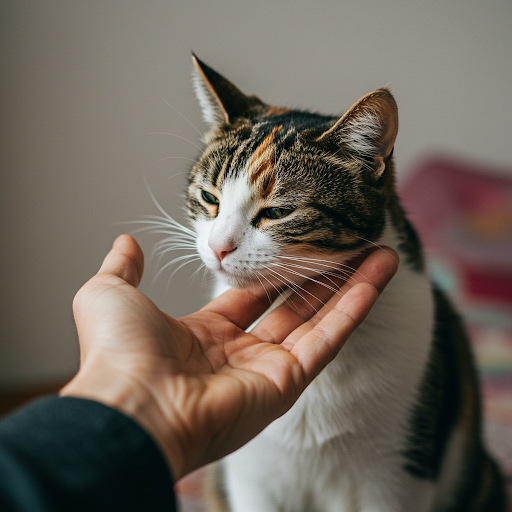
If your cat has ever confidently walked up to you only to rub its head against you, congratulations—you’ve been marked. And that’s good news! A head butt, or bunting as it’s known technically, is a cat’s way of stamping their scent on you. It’s akin to wearing a pin that declares, ‘This is my human.’ Welcome to the club.
Head rubs signify acceptance and deep trust, signaling that your cat views you as part of their territory. You’ve heard of love marks, surely? These are like that, but furrier and infinitely more endearing.
Soft Purrs and What They Mean
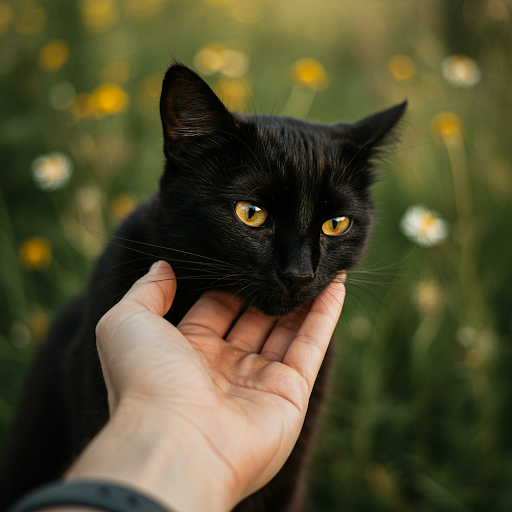
There’s something musical about the subtle hum emanating from a content cat snuggled on your lap. Science suggests that a purr’s frequency can even promote healing, showing that cats are not just affectionate but multifunctional!
A rescue cat purring nearby often indicates they feel relaxed and happy. However, remember that occasionally cats purr to self-soothe when stressed. It’s one of those rare things in life – like ice cream for breakfast – that’s good for both of you.
The Tail Tell: Understanding Feline Flags
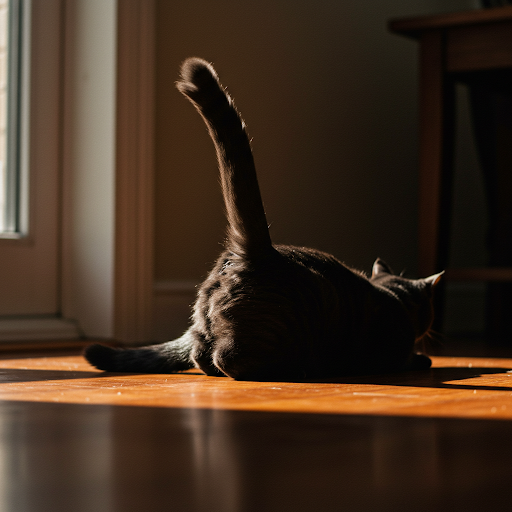
Your rescue cat’s tail is akin to a finely tuned antenna, broadcasting emotional waves with every twitch. A high, quivering tail greeting you at the door is almost equivalent to an exuberant wave and a grin. It’s pure joy and acknowledgment of your presence.
Watch for the tail’s position and movement. While a low, swishing tail typically indicates they’re on alert, an upright tail with a hooked tip is your green signal – they’re ready for some belly rubs and treats!
Paw Kneading: Getting in Touch with Their Inner Baker

Don’t be surprised if you’ve been turned into a makeshift dough. Kneading is a deeply nostalgic behavior for cats, reminiscent of their kitten days with their mothers. When your rescue cat chooses to knead on you or their favorite blanket, they’re showcasing serious comfort mojo.
Think of it as feline aromatherapy – it’s your animal companion settling into a space of calm and affection, a soft reminder of tender memories.
Gifts from the Heart: The Mysterious Tribute

Finding a ‘gift’ from your beloved furball — be it a small prey, favorite toy, or unforeseen item — signals an act of sharing their world with you. Yes, it may test your patience and housekeeping skills, but in their own fuzzy way, they’re expressing deep-seated loyalty.
Though understanding this behavior in rescue cats may require a bit of detective work, such presents remind us of the innate hunter inside our cats, brought to life by their feelings of security with you.
The Love Bite: Understanding Gentle Nibbles

Every once in a while, your attention might be demanded with a playful ‘love bite’ – a soft nibble never escalating to real pain. It’s your cat’s way of saying, ‘Hey, let’s engage!’ In the wild, this would be a playful sparring session for skills and bond building.
Kindly draw the line at moderation – where there’s a love nibble, teeth can occasionally get, well, assertive! It’s all part of the nuanced art of communicating for your little fur companion.
Why Playfulness Is a Sign of Affection
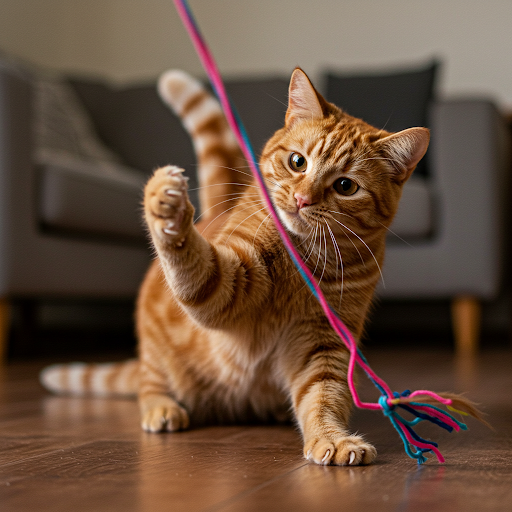
Whether it’s a burst of energy at the crack of dawn or an intricate game of string-chasing at night, playfulness in cats is indicative of a happy disposition. The eagerness to play is often more prevalent in shelter-to-home rescues, signaling adaptation and comfort in their new place.
Engage with this playfulness. Not only does it show you’re a willing participant in their world, but it enriches the mutual bond of companionship.
The Contented Belly Up Pose

If your rescue cat flops down and exposes their belly to you, congratulations—this is feline for ‘I trust you completely.’ Even the more aloof of cats utilize this pose, relaxing into vulnerable positions only for those they’ve deemed trustworthy.
Resist the urge to dive in for belly rubs unless invited. It’s a sacred territory, a display of comfort and rare vulnerability.
Take note the next time you’re offering the royal treatment to your cat – are their whiskers pushed forward? This almost hidden mechanism in their anatomy is a tender, heartwarming giveaway. Whiskers pushing forward spells curiosity and eagerness, an affectionate openness towards you.
Understanding these micro-expressions lends you invaluable insight into how your rescue cat navigates sharing moments of closeness and engagement.
How Cats Vocalize Affection
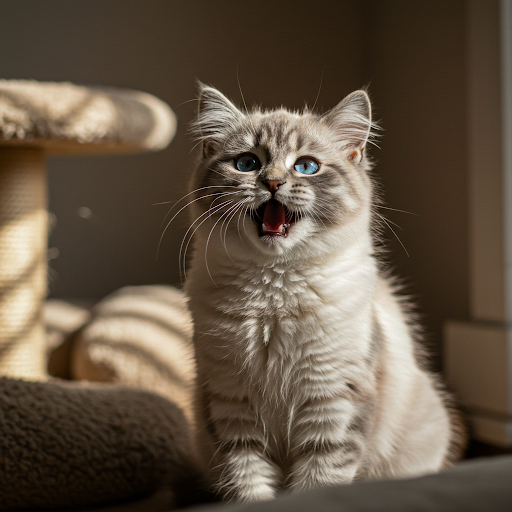
Yes, the meows, trills, chirps, and chatters you’re serenaded with have volumes of meaning. Each vocal tone, pitch, and volume is yet another diary entry in your cat’s emotional journal directed at its humans.
Your rescue cat might audition for the role of ‘Small Town News Anchor,’ announcing everything from hunger to drowsiness, but largely companionship. These sounds invite you into their world, a cue to exchange affections.
Cat Companionship as a Form of Love

All too often, cat affection is summed up by lap-snuggling under a thick blanket, with an arm draped off the couch, lazily stroking fur. This ritual, this shared silence punctuated by the occasional snore, is an unspoken declaration of love and togetherness.
Inhabit this space wholly, knowing this companionship comes from a deep place of trust and contentment.
Understanding Eye Contact and Bonding

Eye contact holds more than meets the eye (pun intended). In the wild, direct eye contact can be a confrontation. But when it comes from your cat, and especially at a reasonable intensity, it signals alignment and a trusting gaze.
Your rescue cat curiously meeting your eyes indicates a bridge of connection; it’s the feline equivalent of a wrist squeeze—a catalytic moment of unguarded intimacy.
Frequent Stalking and Close Proximity
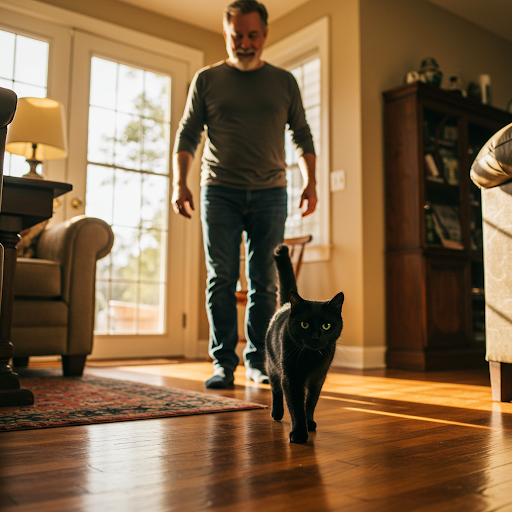
Did you know your every shadow might have a feline third wheel? If everywhere you go turns into a synchronized shared walk with your cat, consider this an exhibit of love. Maintaining proximity signals a cat’s willingness to share your headspace and physical space alike.
Your rescue probably won’t break into a choreographed dance anytime soon, but you’ll feel as special sharing those small moments in the same room.
Telling Your Cat’s Love Language
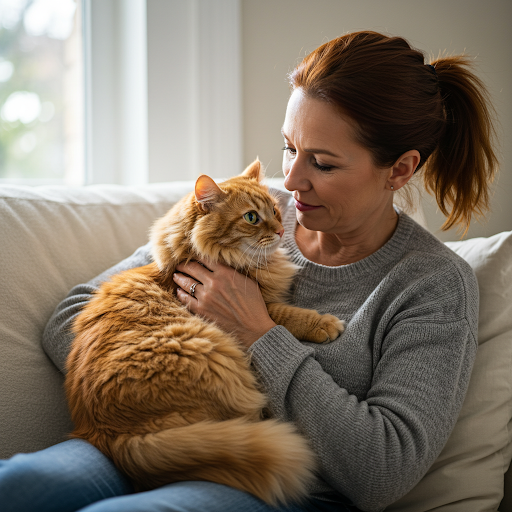
By now, you’re well on your way to deciphering your rescue cat’s complex love language. Allow yourself to rest in this furry adventure, as you interpret not just feline gestures, but how these intricate displays reflect our own needs for connection and understanding.
A cat and its owner form a unique symphony of affection conducted silently yet powerfully, through one eye gaze, tail flick, and whisker pull at a time. Welcome to this world of wordless love.

